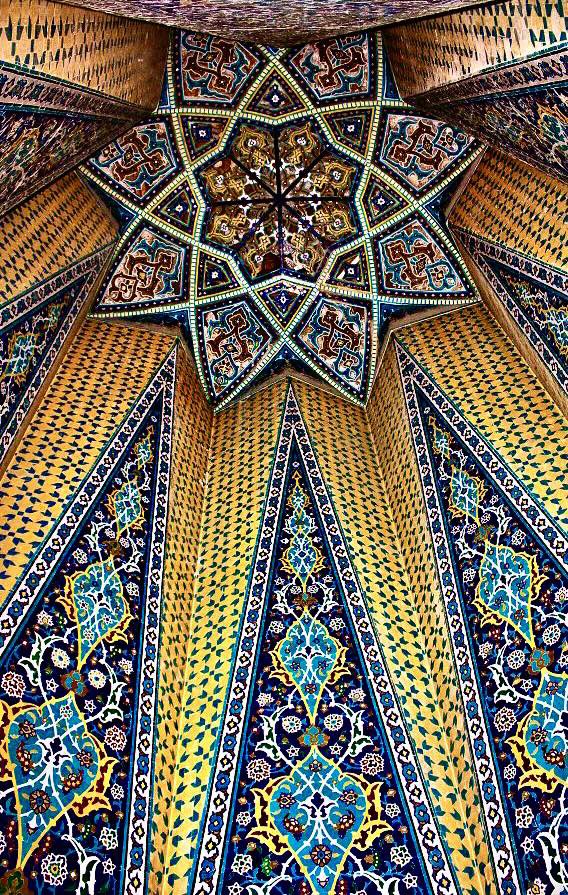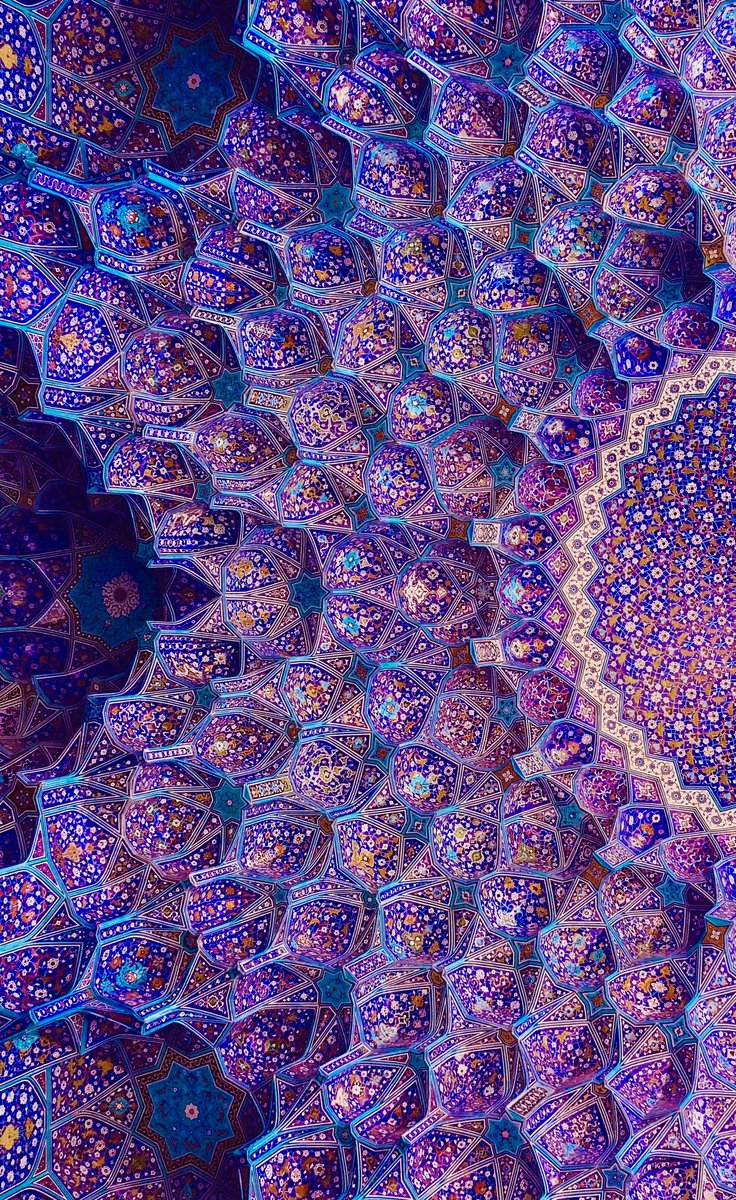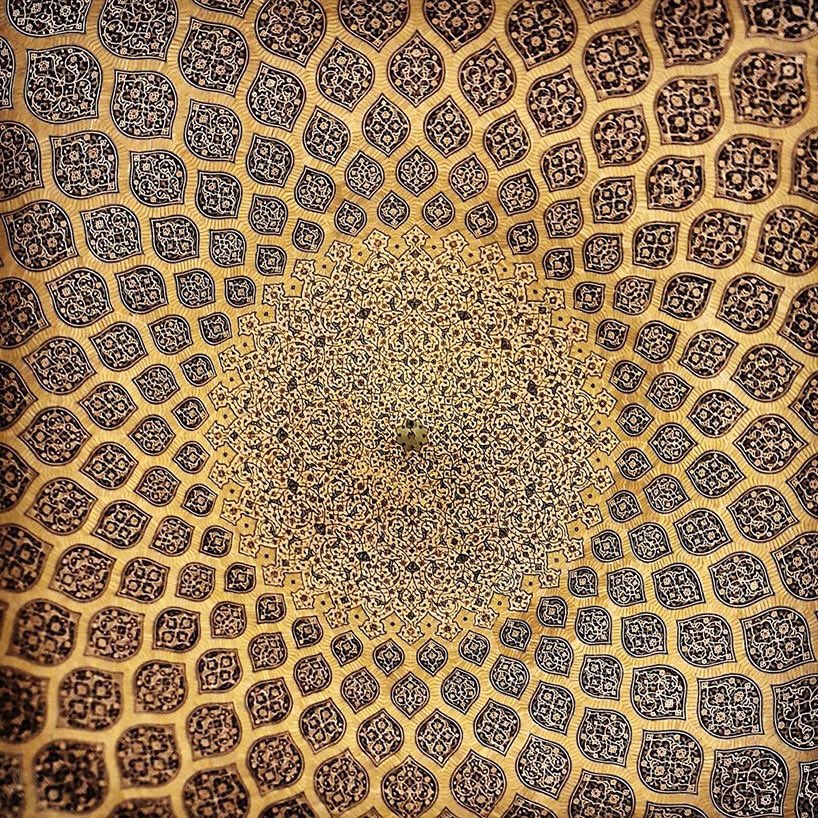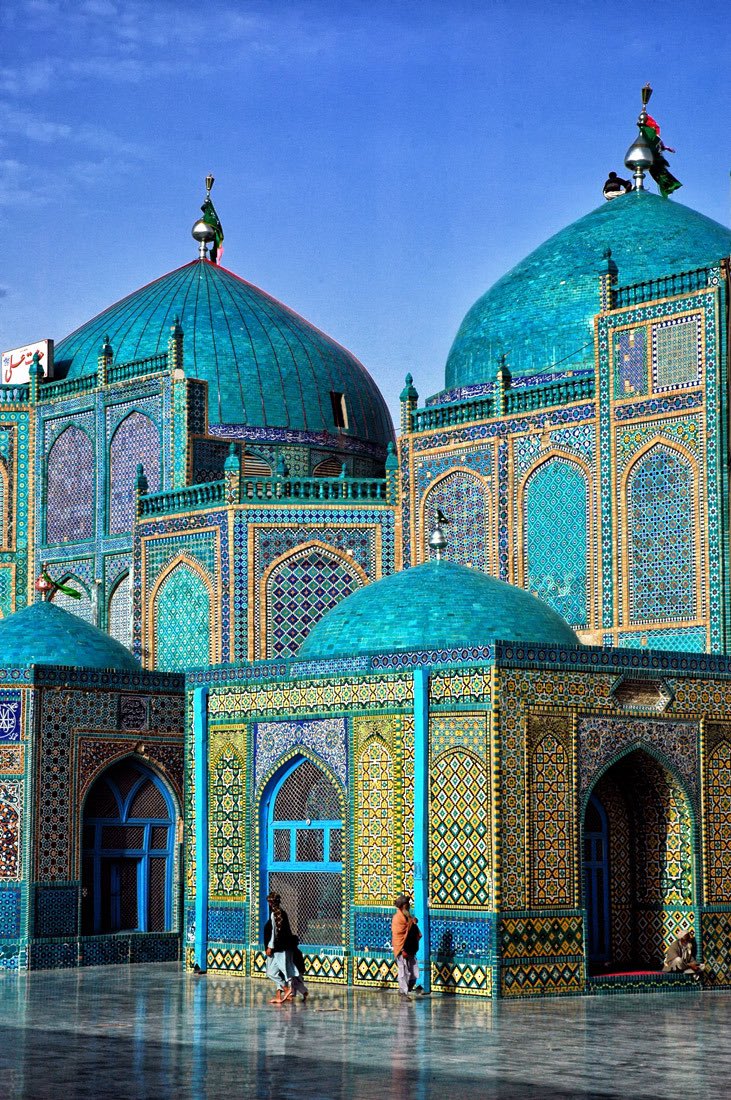
Muslims believe Laylat al-Qadr, is the night God first revealed the Qurʾān to the Prophet Muhammad (PBUH), through the angel Gabriel. It takes place on one of the final 10 nights of Ramadan.
For #LaylatalQadr here are 23 Qur’anic manuscripts in museums & collections.
A thread…
For #LaylatalQadr here are 23 Qur’anic manuscripts in museums & collections.
A thread…
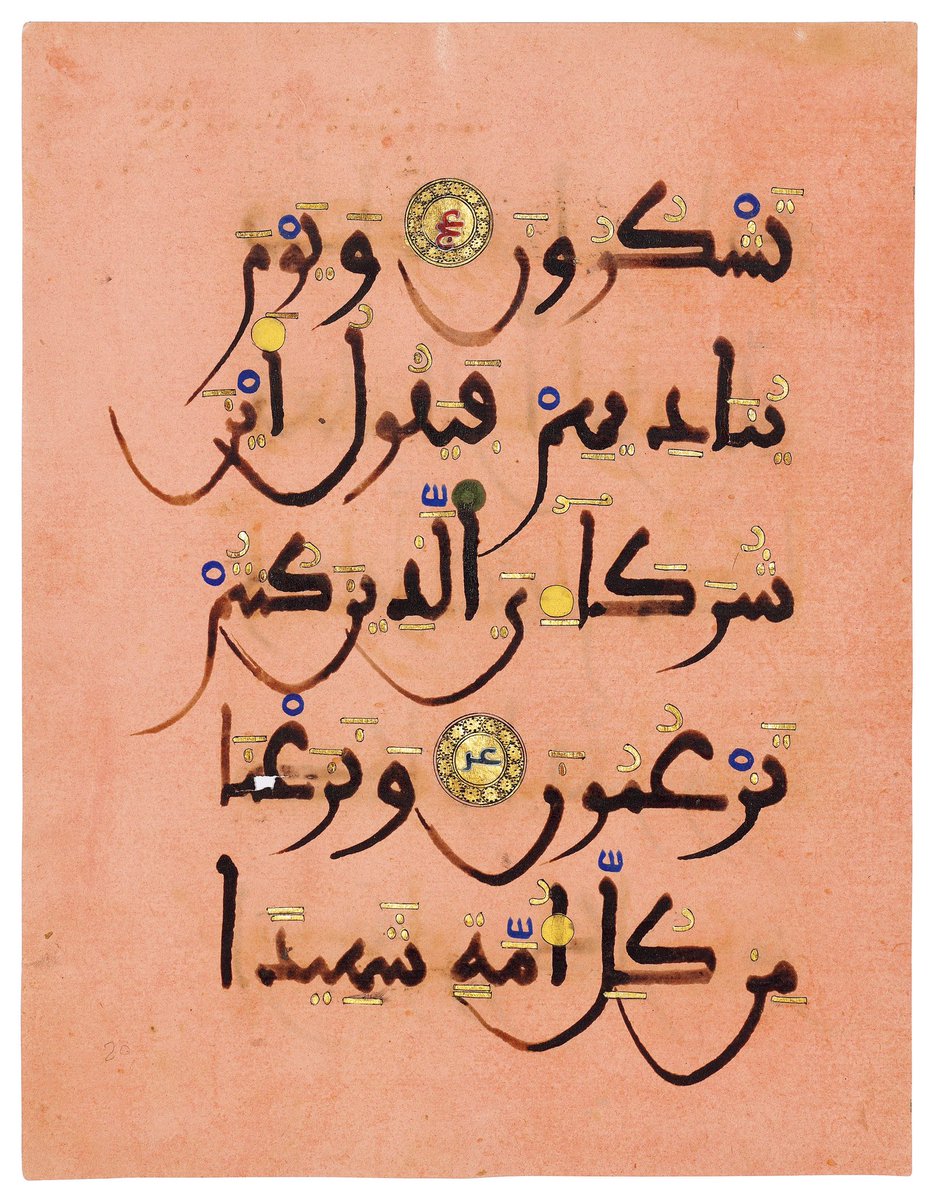
1/ Folio from Qur’an, 1075-1100 Saljuq
Iran
@NatAsianArt
Sura al-Ma'ida (the Table spread) 5:34 and part of 35, recto begins with "illalladhina"; verso: sura 5:parts of 35 and 36, verso begins with "waja[a]hidu; Arabic in black eastern kufic (New Style)
#Ramadan #LaylatulQadr
Iran
@NatAsianArt
Sura al-Ma'ida (the Table spread) 5:34 and part of 35, recto begins with "illalladhina"; verso: sura 5:parts of 35 and 36, verso begins with "waja[a]hidu; Arabic in black eastern kufic (New Style)
#Ramadan #LaylatulQadr

2/ Folio from Qur’an, 9th - 10th century
North Africa
@brooklynmuseum
The “Blue” Qur’an, named after the rich, indigo-dyed parchment used for its folios, is arguably one of the most extraordinary luxury manuscripts ever created #Ramadan #LaylatulQadr
North Africa
@brooklynmuseum
The “Blue” Qur’an, named after the rich, indigo-dyed parchment used for its folios, is arguably one of the most extraordinary luxury manuscripts ever created #Ramadan #LaylatulQadr

3/ Folio from Qur’an, c. 19th century
Malay Peninsula, Terengganu
Asian Civilisations Museum
Gold played an important, possibly role in defining the aesthetics of Qur’anic calligraphy from Terengganu (eastern Malaysia). #Ramadan #LaylatulQadr
Malay Peninsula, Terengganu
Asian Civilisations Museum
Gold played an important, possibly role in defining the aesthetics of Qur’anic calligraphy from Terengganu (eastern Malaysia). #Ramadan #LaylatulQadr

4/ Folio from Qur’an, c. 16th century
Iran
@LACMA
Shiraz was a significant and highly prolific center for the production of luxury manuscripts, including copies of the Qur’an, some of which were intended for export.
#Ramadan #LaylatulQadr
Iran
@LACMA
Shiraz was a significant and highly prolific center for the production of luxury manuscripts, including copies of the Qur’an, some of which were intended for export.
#Ramadan #LaylatulQadr

5/ Folio from Qur’an, 19th century
Ottoman, Turkey
@Sothebys
Written in naskh in black ink, ruled in gold, black & red, verses separated by gold and polychrome rosettes
#Ramadan #LaylatulQadr
Ottoman, Turkey
@Sothebys
Written in naskh in black ink, ruled in gold, black & red, verses separated by gold and polychrome rosettes
#Ramadan #LaylatulQadr

6/ Folio from Qur’an, 1640–41
Pre-Partition India
@KhaliliOnline
The scribe was ‘Abd al-Haqq Amanat Khan Shirazi, who was particularly famous as a calligrapher and designed the inscriptions for the Taj Mahal at Agra, retired to a village near Lahore #Ramadan #LaylatulQadr
Pre-Partition India
@KhaliliOnline
The scribe was ‘Abd al-Haqq Amanat Khan Shirazi, who was particularly famous as a calligrapher and designed the inscriptions for the Taj Mahal at Agra, retired to a village near Lahore #Ramadan #LaylatulQadr

7/ Folio from Qur'an, 14th century
Egypt or Syria
@metmuseum
Mamluk Qur’an manuscript, surat al-Maryam written in naskhi script inside cloud-bands, a device inspired by Chinese art, against a hatched background #Ramadan #LaylatulQadr
Egypt or Syria
@metmuseum
Mamluk Qur’an manuscript, surat al-Maryam written in naskhi script inside cloud-bands, a device inspired by Chinese art, against a hatched background #Ramadan #LaylatulQadr

8/ Leaf from Qur'an, 3rd century AH/CE 9th
Middle East
@walters_museum
Written in Early Abbasid (Kufic) script in dark brown ink & vocalized with red & green dots.
#Ramadan #LaylatulQadr
Middle East
@walters_museum
Written in Early Abbasid (Kufic) script in dark brown ink & vocalized with red & green dots.
#Ramadan #LaylatulQadr

9/ Folio from Qur'an, 1053/1643
Beijing, China
credit @CellardEleonore
Women calligraphers copying the Qur'ān are well known but female names are rarely found in manuscripts. This copy has the name of calligrapher Ama Allāh Nūr al-'ilm bint Rashīd al-Dīn #Ramadan #LaylatulQadr
Beijing, China
credit @CellardEleonore
Women calligraphers copying the Qur'ān are well known but female names are rarely found in manuscripts. This copy has the name of calligrapher Ama Allāh Nūr al-'ilm bint Rashīd al-Dīn #Ramadan #LaylatulQadr

10/ Leaf from Qur'an, 19th century
Dagestan
@britishlibrary
Dagestan is a republic located in the Russian Federation & home to a rich & distinctive manuscript culture. Start of Surah Maryam, with calligraphic treatment of the 'mysterious letters', at the #Ramadan #LaylatulQadr
Dagestan
@britishlibrary
Dagestan is a republic located in the Russian Federation & home to a rich & distinctive manuscript culture. Start of Surah Maryam, with calligraphic treatment of the 'mysterious letters', at the #Ramadan #LaylatulQadr

11/ Folio from Qur'an, c. 1360-1380
Cairo, Egypt
@CBL_Dublin
Closing pages from a Mamluk Qur'an with chapter 113 and 114 in muhaqqaq script.
#Ramadan #LaylatulQadr
Cairo, Egypt
@CBL_Dublin
Closing pages from a Mamluk Qur'an with chapter 113 and 114 in muhaqqaq script.
#Ramadan #LaylatulQadr

12/ Folio from Qur'an, 1307–8
Baghdad, Iran
@metmuseum
During the Ilkhanid period a series of magnificent large‑scale Qur'an manuscripts were produced. This can be directly linked to royal patronage; the size, quality of their paper & splendid calligraphy #Ramadan #LaylatulQadr
Baghdad, Iran
@metmuseum
During the Ilkhanid period a series of magnificent large‑scale Qur'an manuscripts were produced. This can be directly linked to royal patronage; the size, quality of their paper & splendid calligraphy #Ramadan #LaylatulQadr

13/ Folio from Qur'an, Hafsid dynasty, early 9th/15th
National Library of France
Purple Quran’ from the collection of the National Library of France. Made in Maghreb, written with silver ink on dyed paper.
#Ramadan #LaylatulQadr
National Library of France
Purple Quran’ from the collection of the National Library of France. Made in Maghreb, written with silver ink on dyed paper.
#Ramadan #LaylatulQadr

14/ Folio from Qur'an, 16th century
Ottoman, Turkey
@NatAsianArt
Arabic in white and black thuluth, naskh and muhaqqaq scripts #Ramadan #LaylatulQadr
Ottoman, Turkey
@NatAsianArt
Arabic in white and black thuluth, naskh and muhaqqaq scripts #Ramadan #LaylatulQadr

15/ Folio from Qur'an, 1232-1492 CE
Spain
@ChristiesInc
The Andalusian Pink Qur’ān, written in Maghribi script on large dyed paper, is attributed to the Nasrid sultans of Granada, who used to write their letters on colored papers varying from red to pink #Ramadan #LaylatulQadr
Spain
@ChristiesInc
The Andalusian Pink Qur’ān, written in Maghribi script on large dyed paper, is attributed to the Nasrid sultans of Granada, who used to write their letters on colored papers varying from red to pink #Ramadan #LaylatulQadr

16/ Folio from Qur'an, 14th century
Cairo, Egypt
@librarycongress
The first chapter of the Qur’an, al-Fatihah (The Opening). The script in the main text frame is in naskh, a cursive style preferred in Qur’ans made in Cairo during the 14th-15th centuries #Ramadan #LaylatulQadr
Cairo, Egypt
@librarycongress
The first chapter of the Qur’an, al-Fatihah (The Opening). The script in the main text frame is in naskh, a cursive style preferred in Qur’ans made in Cairo during the 14th-15th centuries #Ramadan #LaylatulQadr

17/ Folio from Qur'an
Djenne, Mali
@britishlibrary
A page from qur’ān EAP488/1/8/1 (undated), reproduced courtesy of the British Library.
#Ramadan #LaylatulQadr
Djenne, Mali
@britishlibrary
A page from qur’ān EAP488/1/8/1 (undated), reproduced courtesy of the British Library.
#Ramadan #LaylatulQadr

18/ Leaf from Qur'an, 8th/9th c.
Hast Imam Library, Tashkent, Uzbekistan
The Samarkand Kufic Qur’an was thought to be one of the oldest copies. The date the it was written varies between 595 AD – 855 AD. Most researchers agree it was written in 8th/9th c. #Ramadan #LaylatulQadr
Hast Imam Library, Tashkent, Uzbekistan
The Samarkand Kufic Qur’an was thought to be one of the oldest copies. The date the it was written varies between 595 AD – 855 AD. Most researchers agree it was written in 8th/9th c. #Ramadan #LaylatulQadr

19/ Folio from Qur'an, 19th Century
Banten, Java, Indonesia.
National Library of Indonesia, Jakarta
A fine example of Islamic illumination in South East Asia, with distinctive use of black and red #Ramadan #LaylatulQadr
Banten, Java, Indonesia.
National Library of Indonesia, Jakarta
A fine example of Islamic illumination in South East Asia, with distinctive use of black and red #Ramadan #LaylatulQadr

20/ Folio from Qur'an, 1246 AH/1831 AD
Kashmir
@Sothebys
Copied by Muhammad Hasan lines to the page, written in naskh in black ink within clouds against a gold ground, the Persian interlinear in red nasta’liq #Ramadan #LaylatalQadr
Kashmir
@Sothebys
Copied by Muhammad Hasan lines to the page, written in naskh in black ink within clouds against a gold ground, the Persian interlinear in red nasta’liq #Ramadan #LaylatalQadr

21/ Folio from Qur'an, c. 1330-1350
Central Asia
@philamuseum
Early Muslim settlers from central and western Asia carried Islamic book traditions into India, especially in the form of Qur'ans, such as the one from which these pages come #Ramadan #LaylatalQadr
Central Asia
@philamuseum
Early Muslim settlers from central and western Asia carried Islamic book traditions into India, especially in the form of Qur'ans, such as the one from which these pages come #Ramadan #LaylatalQadr
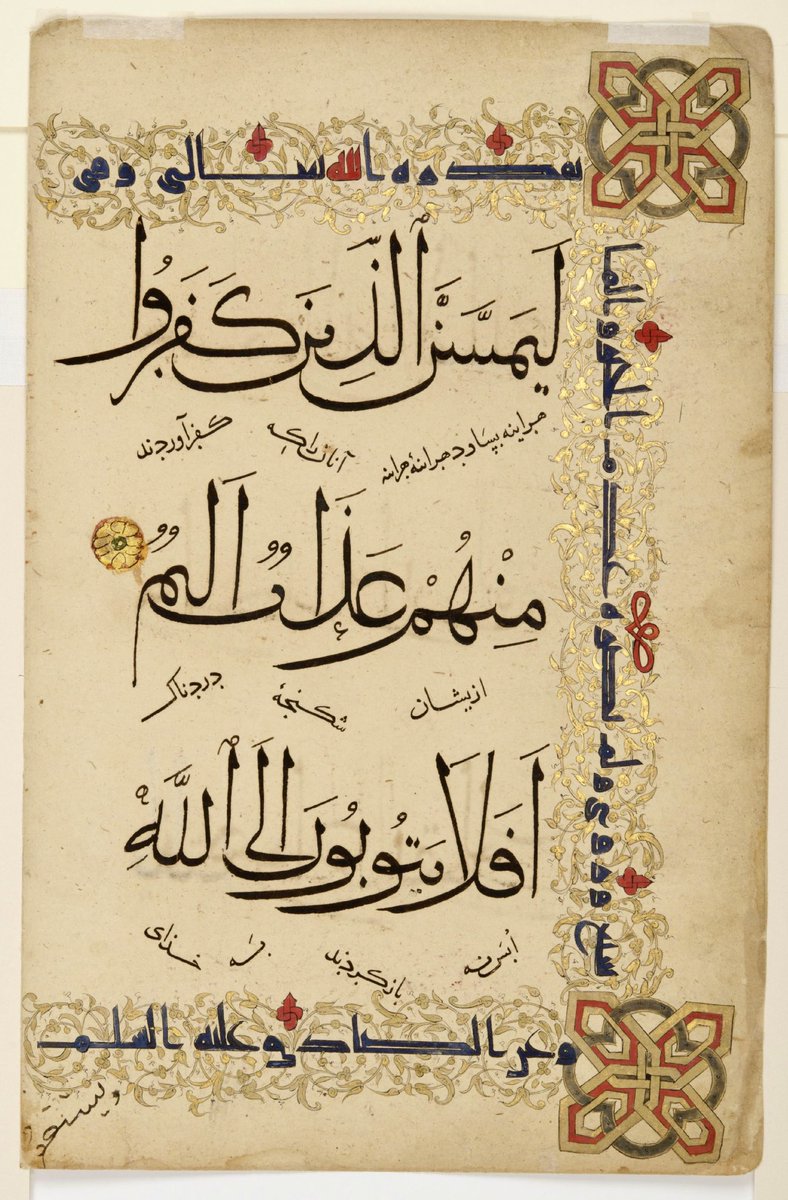
22/ Folio from Qur'an, 14th century
Mamluk, Egypt
@NatAsianArt
Detached folio from a dispersed copy of the Qur'an; left -hand half of a double-page frontispiece; Sura al-Baqara (the Cow), sura heading in white kufic with gold rosette verse markers #Ramadan #LaylatalQadr
Mamluk, Egypt
@NatAsianArt
Detached folio from a dispersed copy of the Qur'an; left -hand half of a double-page frontispiece; Sura al-Baqara (the Cow), sura heading in white kufic with gold rosette verse markers #Ramadan #LaylatalQadr

23/ Folio from Qur'an, Late 16th century
Deccan (Golconda)
@MorganLibrary
This magnificent leaf originally must have faced a page that began with Muḥammad's first revelation (610), sura 96.1—5 (Iqraa, or "Read!" or "Proclaim"), also known as al-˓Alaq #Ramadan #LaylatalQadr
Deccan (Golconda)
@MorganLibrary
This magnificent leaf originally must have faced a page that began with Muḥammad's first revelation (610), sura 96.1—5 (Iqraa, or "Read!" or "Proclaim"), also known as al-˓Alaq #Ramadan #LaylatalQadr

• • •
Missing some Tweet in this thread? You can try to
force a refresh


